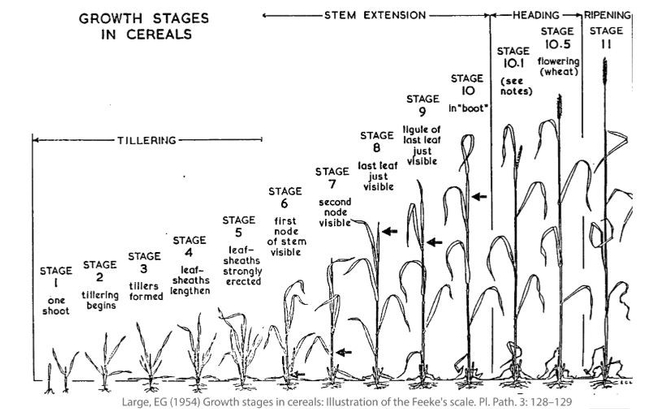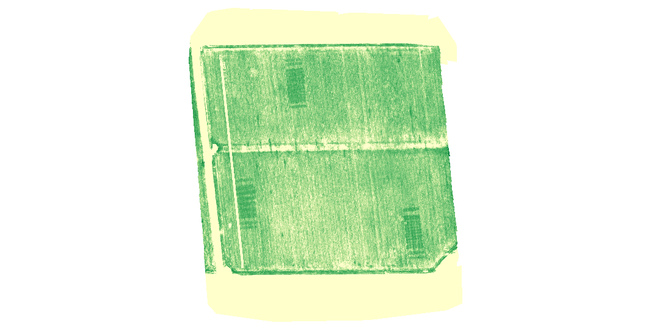Over the last several months, a team from UC Cooperative Extension has been conducting trials with wheat growers to better understand nitrogen (N) management under local conditions. The trials are funded by the CDFA Fertilizer Research and Education Program and demonstrate practices that UC Small Grains Specialist, Mark Lundy, has been investigating for several years, namely the use of N-rich strips in the field, a soil nitrate (NO3-) quick test, handheld canopy reflectance devices, and drone imagery. The N-rich strips serve as zones of soil N adequacy, and the soil NO3- quick test, canopy reflectance devices, and drone imagery serve to characterize differences between the zones of N adequacy and the rest of the field. Our trials implement these practices across variable soil and climatic conditions so that we can extend the information across wheat-growing regions of the state. Integral to these trials is identifying growers who are interested and able to shift at least half of their seasonal N budget from a pre-season to an in-season N application. Our goal is to help growers and consultants learn and implement these practices to guide nitrogen fertilization in wheat, for economic and environmental efficiency outcomes.
At the Delta location on Tyler Island, we are trialing these practices on high organic matter soils. The field has two different soil types: Gazwell mucky clay and Rindge mucky silt loam. The Gazwell series is characterized as having approximately 11 percent organic matter in the top foot of soil, and the Rindge series has approximately 18 percent organic matter in the top foot of soil. The grower's pre-plant aqua ammonia application provided approximately 60 pounds of N per acre, and the wheat was planted on November 15th. After planting, we flagged off three zones for the N-rich strips – two in the Gazwell soil and one in the Rindge soil. Each strip was 90 feet wide by 180 feet long. (While, in practice, N-rich strips do not need to be this large, we made ours this large so that we could also make observations from satellite imagery.) We took soil samples and performed the soil NO3- quick test (described below). On November 25th, we applied urea to the N-rich strips at a rate of approximately 62 pounds of additional N per acre. We timed our application ahead of a storm in the following days (approximately 0.5 inches, according to the Staten Island CIMIS station).
The soil NO3- quick test is performed in the field and provides a quick, inexpensive estimate of nitrogen availability in the soil. We performed the quick test just after planting to establish baseline conditions and then again each time we used the canopy reflectance devices and collected drone imagery, which we started at tillering (Feekes 2-3, Figure 1, see below). For the quick test, it is important to get representative soil samples, staying away from field edges and from the borders of the N-rich strips. We collected and aggregated several subsamples from the top 12 inches, from both inside and outside the N-rich strips. The soil was mixed with a calcium chloride solution, and then the test strips were dipped into the soil-water solution. The color on the strip is compared to the color chart on the bottle. In an organic soil, we consider a test strip reading of 10 ppm and above to be adequate soil N, and in a mineral soil, a test strip reading of 20 ppm and above would be adequate. (This is due to the higher bulk density of a mineral soil compared to an organic soil.) The quick test reading is not the same as what a lab would determine for the same sample. Mark and his team are preparing an online tool that will convert the quick test reading to the lab-equivalent value of NO3--N and the fertilizer equivalent in pounds of N per acre, based on soil type. We would expect to see higher soil NO3- in the N-rich strips compared to the surrounding field unless heavy rainfall resulted in leaching. (Consider the benefits of only leaching N from small plots rather than the entire field!) For fertilizer decision-making, the quick test readings are best considered in combination with plant reflectance measurements (see below). On their own, however, they do provide an estimate of nitrogen fertilizer equivalency that is available to the crop.
We have used Greenseeker NDVI devices and drone imagery to characterize canopy color of the N-rich strips and the surrounding field (Figure 2, see below). NDVI stands for normalized difference vegetation index and is a measurement of green vegetation that picks up differences that the human eye cannot detect. It allows us to make inferences about canopy cover and plant N status, and when considered with soil NO3- status, we can have even more confidence in our fertilization decisions. For example, if soil NO3- differs between the N-rich strips and surrounding field, and we observe a difference in canopy reflectance, then we have confidence – based on previous years of research – that the crop will respond to additional N fertilizer. If we don't see a difference in canopy reflectance, we would recommend postponing application of additional fertilizer and continue monitoring, or we would recommend adjusting the application to account for the available soil N. At tillering, we started sampling for soil NO3- and canopy reflectance on 14-day intervals. In February, we started seeing slight differences in Greenseeker canopy reflectance between the N-rich strips and the surrounding field, but the differences were not evident in the drone imagery. There was no rain on the horizon at that time and no opportunity to apply additional N. By early-March, the grower made the decision not to apply additional N this year, and we, in UCCE, needed to reduce activities due to the Covid-19 outbreak. We will, however, harvest the trial to determine whether there are yield or quality differences between the N-rich strips and the field.
In the future, I will use this blog to extend further information about the trial, including data for the Delta site. More immediately, the research team will be producing a series of weekly articles in the month of May that will be posted to the UC Small Grains Blog to provide more in-depth information on each of the practices. We will also be creating videos to demonstrate how to implement these practices. Consider subscribing to both blogs to be notified of new content.
Figure 2. Drone image of a field in Solano County where N-rich strips are implemented. (Photo courtesy of Mark Lundy and Taylor Nelsen, UC Davis.)

